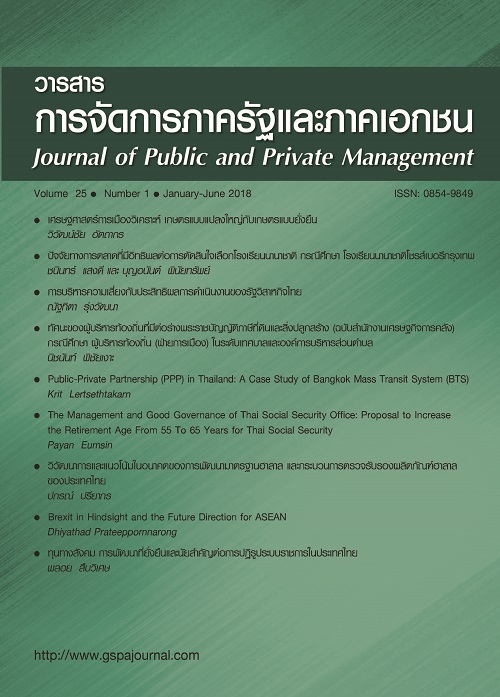Risk Management and Performance of State Enterprises in Thailand
Abstract
The objectives of this study were to investigate the elements having impacts on the quality of risk management practiced by state enterprises in Thailand, and to examine the connection between quality of risk management and the performance of state enterprises. The research employed the quantitative method using a survey response from 36 state enterprises, as well as secondary data collected from the database of the State Enterprise Policy Office, and the qualitative method conducted by means of in-depth interviews with 3 state enterprises applying best practice in their risk management.
The results from both methods indicated that among six critical success factors of risk management-size of the entity, investment in risk management information technology, investment in the development of human resources associated with risk management, risk management competency, risk management organizational structure, and risk culture-all had positive impacts on the quality of risk management. Risk culture distinctively yielded positive results in every statistical analysis, whereas other elements revealed a connection in certain statistical methods only.
Concurrently, both the quantitative and qualitative research results confirmed a connection between the quality of risk management and the effective performance of state enterprises. Thus, the government should meliorate the quality of risk management implemented by state enterprises, particularly by fostering risk management culture to achieve better performance. This improvement will create competitive advantage, empowering state enterprises as a mechanism for the sustainable development of Thailand.



